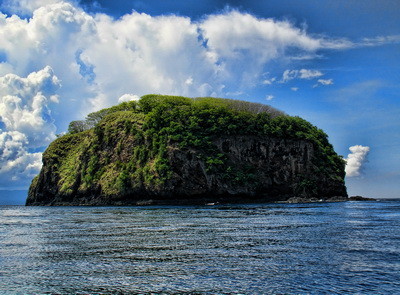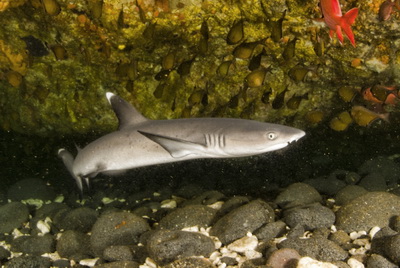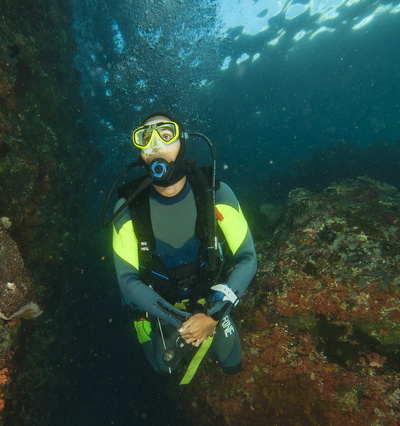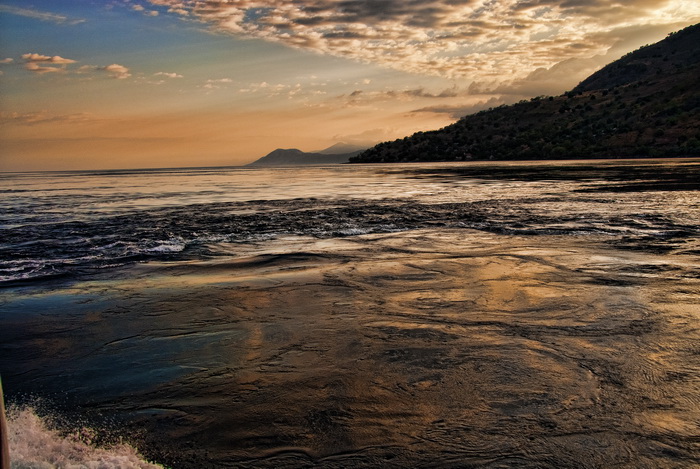
Gili Tepekong has the rather intimidating reputation of being possibly the most dangerous dive site it Bali!
Known in some circles as “the toilet”, the nickname comes from the swirling downdraft currents that can occur around Tepekong, and particularly in the south-western area known as the Canyon.
So strong are these downdrafts that instead of going up to the surface as nature intended, your bubbles can spiral down in to the depths of the Lombok Strait…
Which obviously means there is a strong possibility you may follow them!
Tepekong does offer some spectacular diving, but it demands respect and only a foolish diver would refuse that tribute.
But don’t go to Tepekong expecting to see the soft corals found around the southern edge of Gili Mimpang, or on the Jemeluk Drop-Off at Amed, because the current flows are simply too strong for them to grow.

Instead you will witness first-hand the raw power of the Indonesian Throughflow as it surges through the Lombok Strait and washes around the magnificent underwater rock structures that define Tepekong.
You will also see lots of schooling fish as they feed on the rich waters, all provided of course, that it is safe to do so.
The key to diving Gili Tepekong safely is quite simple…
You need a guide you can trust and one who really understands how to read the complex surface patterns & signs that indicate when it is safe to dive and when it is not.
You also need time up your sleeve, because if your guide tells you that it’s not safe, you have to accept that advice and be prepared to dive elsewhere that day and try for Tepekong again the next day, and quite possibly the day after that.

It’s not an easy task for an Indonesian dive guide to tell a foreigner, who may have traveled half-way around the world to dive the best sites in Bali, to come back tomorrow.
But if that is what they tell you, there is a good reason why and you need to accept it as Gili Tepekong can be a very dangerous place.
The Canyon, on the south-western tip of Gili Tepekong, is the best and certainly the most intense part of the overall site.
It has established a reputation as a must-dive location, mainly because of the large schools of sweetlips & jacks and the groupers & white tip reef sharks to be found there.
Reminiscent of a ruined Roman amphitheater, the Canyon enjoys a macho reputation – kind of “I dived the Canyon and lived to tell the story”.
I have to be state that I have yet to dive the Canyon, because whenever I have been to Gili Tepekong the conditions have never been safe to do so.
Any sign of breaking water on the southwest tip indicates the potential for dangerous downdrafts and the “toilet effect”.
At which point it is time to either dive another part of Gili Tepekong – usually the more sheltered northwest tip, or move over to nearby Gili Mimpang.
The Canyon, along with the other relatively local “power sites” of the Magnet and the Cathedral on the coast of South Lombok, are very high on my diving bucket list…

Surface indications of the strength of the Indonesian Throughflow
Next Page: Puri Jati
Back To: Diving Gili Mimpang
